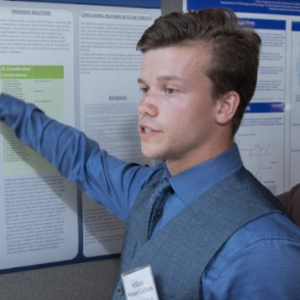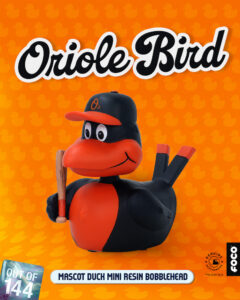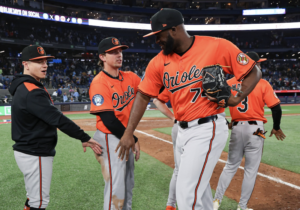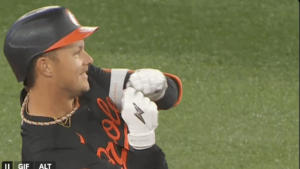For Liftoff Talk, Part 1 (What Type of Free Agent Should the O’s Target?), Click Here
Where to start?
Let’s trade for a starting pitcher, like the Astros once did.
Personally, I like the idea of returning to two familiar trade partners in the Miami Marlins and the Los Angeles Angels, who both have multiple young, talented, left-handed pitching assets who could see their skills optimized in OPACY.
Familiar Partners
The Orioles have linked up with both of these teams in the recent past for trades (Cole Sulser/Tanner Scott deal with Miami, Dylan Bundy & Jose Iglesias deals with Los Angeles), and neither team are known for having progressive front offices with a keen eye for talent acquisition (though who can really know if this matters, or is relevant today?)
Both have a commodity that the Orioles could use (young, talented LH starting pitcher) and have serious issues with offensive depth and lack reliable everyday offensive players. The Orioles are in a position where they have plenty of reliable offensive players (and upper-level prospects projected similarly) but are looking to acquire impact talent.
General Scouting
Whether evaluating free agents or potential trade targets, I always recommend watching a cross-section of video to pair with the numbers. This is especially feasible for starting pitchers where their performances are compressed into 1-2 minute video clips on MLB.com (or longer clips on YouTube). By a “cross-section,” I mean watch, for example, a 90th percentile start, a 10th percentile start, and a couple in-between. See how they succeed when everything is working, and how they deal with failure. Do they implode when they don’t have their signature pitch? At what point in starts do they diversify pitch mix? When does the quality of their stuff start to lapse?
Just as an example, here are my scouting notes on each of these four pitchers, with the caveat that this is just the eye test. These are my impressions. Scouting is optimized when paired with stats to ensure subjective observations are accurate, not just a result of variance between performances. I will say, the interesting thing about variance, is that it shows the variety in who a pitcher can be. Sometimes, the best version of a pitcher combines a variety of characteristics across a cross-section of starts (say, increased usage of a slider, specific fastball quadrant targeting, and change-up sequencing following a given swing result). These characteristics might have been observable individually in certain starts, but never in tandem. A pitcher like this, who in basic terms, has all the pieces but has been inconsistent about putting them together, is perfect for the Orioles’ purposes on the trade market. I say this because there are numerous steady-eddy FA pitching options who can serve as fall-backs if one of these trade targets doesn’t pan out.
In the course of my research, I’ve identified four left-handed starting pitchers who could be ideal fits for OPACY and the Orioles current player-development apparatus. Two pitch for the Marlins (Trevor Rogers & Jesus Luzardo) and two pitch for the Los Angeles Angels (Patrick Sandoval and Reid Detmers).
I think each present interesting trade options for the Orioles.
Player-Specific Scouting Notes
Rogers:
His change-up plays outside to righties when it’s on, especially paired with a low-and in fastball, or a slider in on righties. His high fastball absolutely eats up lefties; his great extension and deception allows it to play vs righties as well, especially when he keeps them guessing with his off-speed stuff. He gives off Chris Sale vibes, but is less frail-looking. There are similarities in his extension, deception in delivery and pure stuff. His sliders had some inconsistency in horizontal break in the starts I watched; if that sweeper could be optimized, he’d be deadly.
He gets hit hard when his command lapses on his breaking stuff, the change-up isn’t there, and he has to rely on finding the zone with the fastball. When opposing hitters can’t sit on the fastball and Rogers has at least one breaking pitch working, his fastball is much more effective. I’d also add, that generally varying fastball location within the zone would be beneficial to Rogers; he tends to just go to the high fastball, which gets hammered when a hitter sits on it.
Rogers might want to consider what velocity separation between his fastball and change-up would be most effective. Sometimes his fastball and change-up velocity stray a little too close for my taste. It reminds me of John Means when he poured a little too much energy into his velocity and it messed up the movement profile of his change, making it too firm, with too little velocity separation.
Luzardo:
He seems to short-arm his fastball a bit; I wonder if this takes away from his extension and perceived velocity. Luzardo’s fastball is most effective when moved between quadrants and he’s really made strides in his command. I wonder if the short-arming is for command reasons. When the fastball command isn’t there, it’ll get torched. I think he could go work at the top of the zone with his fastball a little more frequently. His change-up is a straight dropper that seems to play well off the fastball, but I again worry a bit about the velocity separation. His slider is deadly against lefties and seems to work well in to righties. His fastball command is ahead of his off-speed command as of now, but if he can demonstrate the same strides, ace potential is there. I actually have a hard time comping him as of now as many successful lefty starters are longer-limbed. Clayton Kershaw short-arms similarly, but has a much less conventional delivery.
Sandoval:
Sandoval is another short-armer who relies on deception for the fastball to play. He seems to perfectly replicate his fastball mechanics and delivery between his fastball and change-up. I wonder if this accounts for the dominance of the pitch (his best), because it doesn’t, at least visually, have the movement I’d expect from such a dominant change-up. He gets swings all over the zone on the change-up, even when he misses his spots. His slider is an unhittable pitch against lefties and in to righties.
Upon viewing additional film, I’ve noticed that the fastball has escalator-type rise. I’m impressed in how confident he is using the slider in against righties. It’s not a sweeper but has tight spin that assists with his command of it. The change-up is absolutely insane, the veritable evil twin of his fastball. As an Orioles fan, it just looks so different to me from the dominant John Means change-up (that looks slower and has more movement). Looking a bit further, I wonder if he intentionally varies the break on his slider based on the count (i.e. throws more of a tougher-to-command sweeper in favorable pitcher counts, and throws a pitch with tighter break/less sweep when he needs to hit his spot). Really interesting pitcher with surprisingly inconsistent command/control.
Watch him carve up the Orioles here:
Detmers:
He threw a no-hitter in 2022, so that’s cool. He also is a bit of a short-armer who loves to chuck his hard slider inside on righties before going up in the zone with the fastball. The slider is also a consistent pitch against lefties, as is the case with many dominant LH starters. I’ve been impressed with his consistent slider velocity and ability to play it off his fastball in the film I’ve watched; it makes him competitive against righty bats.
His slider location inside to right-handed hitters looks elite to me. He also consistently stays up in the zone to righty batters with his fastball; far enough out of the zone to elicit whiffs without too much HR damage. He drops in his curveball to keep hitters off balance, a pitch with significant vertical movement but more of an average than plus pitch.
He reminds me of Luzardo with a better slider/curve (vs Luzardo’s better changeup) and a couple MPH less velocity.
Further Discussion:
Here is a chart that shows a breakdown of each of these four pitchers’ 2022 HR/9 vs expected HRs in OPACY, their swinging strike percentages, and how much team control they have left.

I have to say, I’m a sucker for low HR rates and high swinging strike rates. Let’s think about what this means: that the pitcher is hard to make contact against, and difficult to take deep. These are important characteristics in run prevention, especially with the context of one of the most significant HR-suppression ballparks in the MLB (give it time, the park values will catch up), and a generally plus-to-elite defense. Yes, Jorge Mateo probably should have won the platinum glove, and Ramon Urias, Cedric Mullins, Adley Rutschman, and Ryan Mountcastle are all credible gold-glove finalists, even if some of them were omitted in the actual voting.
Looking at this chart, we see three pitchers with plus-elite SwStr% rates, a significant amount of team control, and HR numbers that are projected to regress (positively) to a significant extent in OPACY. Like, really significant!
Incredibly, Camden Yards projects as the most favorable ballpark in all of baseball for THREE OUT OF THE FOUR of these pitchers. What that tells me, my friends, is that we’re on to something! (Luzardo (1), Rogers (1), Detmers (3), Sandoval (1))
Scouting all four of these pitchers, I’m pretty positive about the outlook for each of them. I’m especially positive of the outlook for Rogers; while he was the worst performer in 2022, he has the best extension on his fastball, a funky delivery, and promising off-speed deliveries, including a change-up I suspect the Orioles could work with.
It’s kind of tricky to figure out exact trade value (oh dear god please don’t use that trade value website). I do think the price of each, in descending order would be something like: Luzardo, Sandoval, Rogers, Detmers, though the difference between one and four isn’t massive.
Additionally, if, for example, the Marlins think that they can (or did) get Rogers back on track for 2023, they might value him more as his 2021 self. But can I blame them? That’s basically how I would value him, and why I see him as a sneaky pick up for the O’s, who’ve had some success developing and cultivating consistency in their pitcher’s change-ups.
But what would an actual trade look like?
I think the starting piece is Jordan Westburg. I’ll delve deeper into this in a subsequent piece, but based on the shift-limitations (meaning 2B needs to field more like a shortstop) and the suppression of right pull power in OPACY, I think Westburg is the obvious trade option from the group of him, Connor Norby (an accomplished opposite-field power hitter) and Joey Ortiz (a plus-plus shortstop).
Dan Szymborski (to whom I give a very cool and natural hat-tip) projected Westburg very favorably in his midseason piece on the positive updates to Orioles prospect projection. Essentially, in a neutral ballpark for right pull-power (NOT OPACY), Westburg looks like a 2-4 WAR MI over the next several years. That’s a very good player, not far off from a Dansby Swanson-type profile. This is not the early-2000s; prospects are not some esoteric boom-or-bust type-asset, especially by the time they have a full season of plus production in AAA. Any team looking to acquire Westburg probably has a good idea of what they’re going to get; something like Ramon Urias with maybe the upside for a little more bat and a little less glove.
Both the Angels and the Marlins have such little depth that Austin Hays would probably be of interest to them. Maybe Keegan Akin would be of interest as well? This is all hard to say; but let’s say one of those two piece moves the needle a bit.
I think from there, the Orioles need one more interesting piece to add. Someone in the Jean Pinto/Drew Rom range could be a justifiable third piece for a deal. I’d take Westburg, Hays and Rom for Rogers in a heartbeat.
I think you can rearrange this trade for, generally speaking, a top 8-12 O’s hitting prospect, a solid MLB bat/arm, and a 40+/45 value prospect. Based on the Orioles depth chart, I wouldn’t hesitate to part with this package for any of those four guys, especially the former three.
Further Thoughts:
This whole article made me think of two other players, John Means and DL Hall.
I think if Means had stayed healthy, there were multiple factors pointing to a fantastic season from him: the success of LHP at Camden Yards (especially since HRs to RHB have always been among his biggest bugaboos) and the apparent changes to the ball could have helped him elevate to ace-hood (or is it ace-dom?).
I also wonder if Camden Yards will help to ensure that Hall is able to solidify himself in the rotation. Could a Trevor Rogers, or (subsequent piece forthcoming) Carlos Rodon, help mentor Hall and solidify his future in the Orioles rotation?
We shall see.
But give me all the talented lefty starters.











